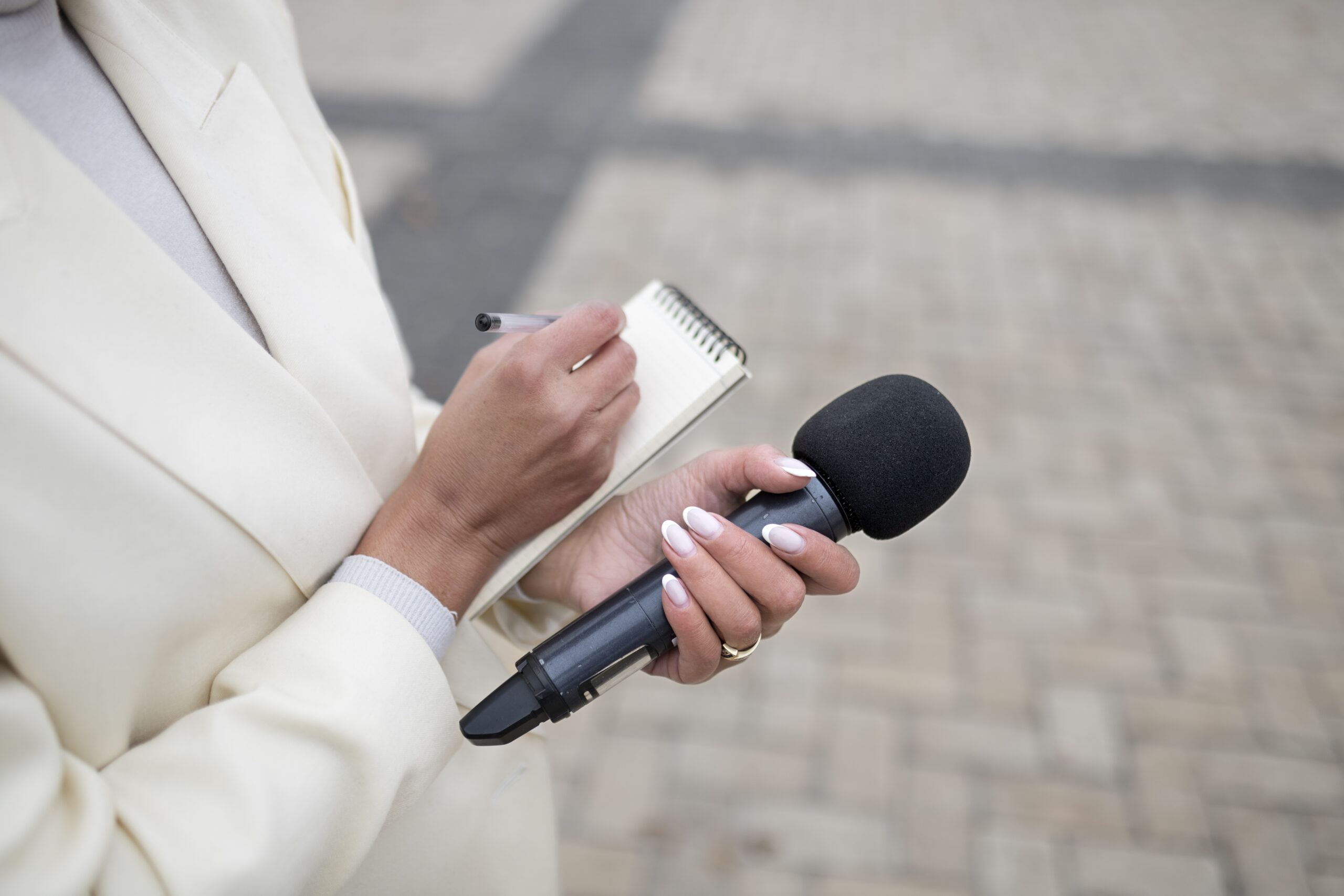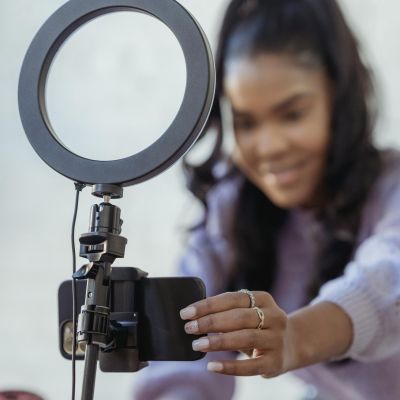Over half of all journalists now use social media to get real time responses from spokespeople, according to Latam Intersect PR’s latest survey on the state of journalism in Latin America
● Half (50.9%) of journalists use the same social media handles for both personal and professional communications, 11.4% admit to being upset when PR professionals contact them on their personal handles, and 45.8% cite the constant receipt of information across different channels at all hours of the day and night as an issue ● After conducting successful surveys in June 2020 and October 2021, Latam Intersect PR have expanded their award-winning series of surveys into the state of journalism in Latin America this year ● The Latin American PR industry leaders conducted two new surveys between August and September 2022: one asked journalists about the state of journalism and the second asked the public about how media consumption has changed
16 December ’22– Sao Paulo – Almost two thirds (62.3%) of Latin American journalists consider the use of social media professionally as the biggest and most lasting impact of the COVID-19 pandemic and resulting restrictions, while over half (54.6%) of Latin American consumers place less trust in the media as a result of the pandemic. This is according to two new surveys conducted by one of the continent’s leading public relations firms, Latam Intersect PR. One survey interviewed hundreds of journalists across six different countries and Central America and Caribbean region, with a combined readership of almost 200 million people, and the other asked 1,800 Latin American respondents about their media consumption.
“This is the third instalment of our ‘state of journalism in Latin America’ survey, which actually won us a Jatobá award last year,” comments Claudia Daré, co-founder and director of the PR agency. “Originally started as a way to ‘check-in’ during the pandemic with the journalists we work with so closely as a public relations agency, our survey demonstrated the transformation in the relationship between news sources and the news developers. It produced so many insights that we’ve decided to continue conducting it as a way to find out more about how journalism continues to change in response to the pandemic and what has been consolidated in the modus operandi of the profession.”
“This year, in addition to hearing from the journalists again, we’ve also added a new survey detailing how the consumption of media has been affected by the pandemic and ‘new normal’,” Claudia adds. “The results of both have been just as illuminating as our first surveys.” Highlights from the survey into the state of journalism – which compiles responses from journalists based in Argentina, Brazil, Colombia, Central America and the Caribbean, Chile, Mexico and Peru – include insights into the evolving relationship between journalism and social media, journalists’ health and wellbeing, preferred working styles, and predictions for how news and news reporting will change in the future.
Over half (54.6%) of journalists now use social media for real time responses from spokespeople, while half (51.2%) also now regularly use pre-recorded voice/video excerpts from spokespeople in their editorial material. Four-fifths (81.1%) of Latin American journalists now consider WhatsApp a principal communication channel for work, and this increases to 96.2% in Chile and 100% in Colombia.
Despite being two years on from the heights of the pandemic, well over half (57.6%) of all Latin American journalists continue to work principally from home. This is interesting to compare with the same survey conducted in 2021 when almost half (48.0%) of all respondents described working from home as ‘stressful’ since they were ill equipped in terms of infrastructure and organisation. In their most recent survey, over a third (38%) of Latin American journalists think that stress levels have increased at work over the last two years, due to the economic and health situation.
“While journalists continue to feel the psychological impact of the pandemic, the survey shows us some interesting permutations,” comments Roger Darashah, do-founder and director of Latam Intersect. “For example, journalists in Argentina are almost two times as likely as those based in Central America and the Caribbean to think that stress levels have increased over the last two years (47.8% vs 26.6% of respondents). Also, female respondents are ten percent more likely to report an increase in workplace stress over the past two years (43.3% vs 33.7%) as well as 46.6% of younger respondents (aged under 35) compared to just 29.8% of their older counterparts.”
“It’s also interesting to see how journalists aged over 35 appear more optimistic about an eventual return to normal working conditions post-COVID,” Darashah adds. “Only 30.1% believe that the sector will never return as before, compared to 38.6% of respondents aged under 35.”
In terms of predictions for the future, almost two-thirds (61.6%) of Latin American journalists believe that Metaverse technology will change the nature of journalism, while around a sixth (15.2%) of journalists have already participated in a work event in the Metaverse.
Latam Intersect PR are also releasing another survey, their very first on the nature of media consumption in Latin America, which also provides plenty of interesting findings, covering topics such as principal news sources, news sharing and trust in media.
For example, almost a third (28.3%) of Latin Americans surveyed never read print media, and 40.5% of Latin Americans now rely on social media as their principal source of media. Almost three quarters (72.5%) consume news directly from publications’ social media profiles, while 40.6% say they consume news from their friends’ feeds and 36% directly from journalists’ social media handles.
“Across Latin America, social media now represents the principal source of news, followed by online news and television,” Claudia comments. “This also means that publications are increasingly turning to social media to propagate their news, which is itself reflected in the proportion of consumers who access news directly from journalists’ own feeds.”
Interestingly, over two-thirds (68.7%) of respondents believe that the pandemic impacted their news consumption habits, meaning that they now listen, read and share more news content than before. Over half (53.4%) share good news and news they tend to agree with, compared with just 5.9% who share news they don’t agree with.
“When looking at both of these surveys as a whole, they tend to point towards some fascinating trends, both ongoing and emerging,” Claudia explains. “One consideration is how news media, both the behaviour of journalists and consumers, has become increasingly intertwined with social media. The impacts of this, in terms of both news content, quality and propagation, are worth a closer look.”
“News ‘sharing’ has become a key priority for the media, but it’s far more likely to happen if the audience agrees with the content. And this inevitably carries a risk of increasing polarisation and echo-chambers,” Darashah adds. “In terms of key takeaways for brands, we were fascinated to find out that breakfast is the preferred moment for consuming media in Latin America, and Facebook (the most popular social media platform across Latin America for direct and shared news consumption, except in Brazil, where Instagram is the most popular). This is a reality and brands should plan accordingly. Also, sources of information should be aware of the significant influence of podcasts and, looking to the future, the potential for getting their message to consumers via the Metaverse, for instance.”














